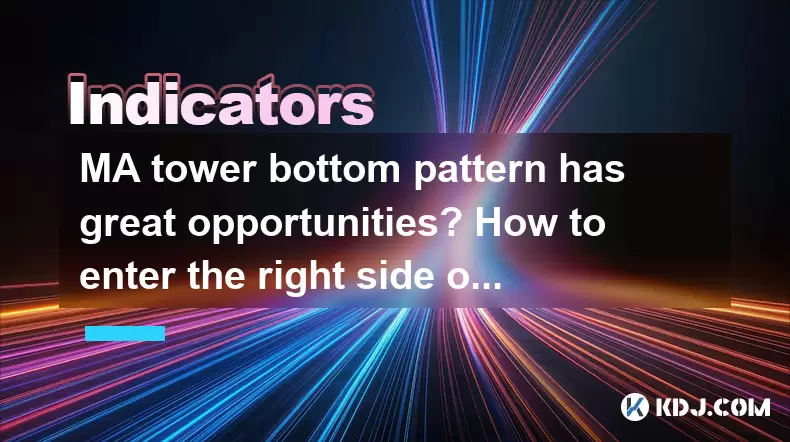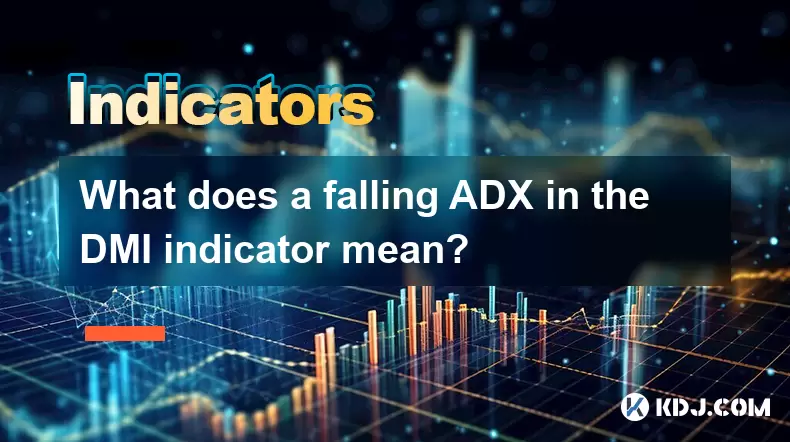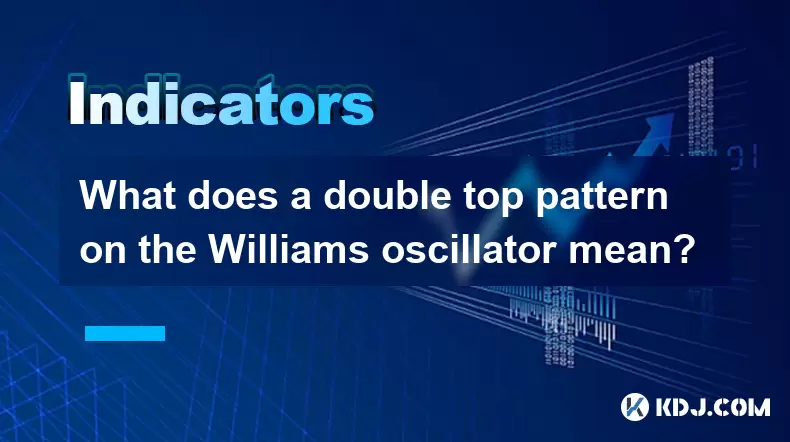-
 Bitcoin
Bitcoin $116700
0.24% -
 Ethereum
Ethereum $3973
4.34% -
 XRP
XRP $3.283
7.68% -
 Tether USDt
Tether USDt $1.000
0.01% -
 BNB
BNB $789.8
2.27% -
 Solana
Solana $176.2
3.31% -
 USDC
USDC $0.9999
0.00% -
 Dogecoin
Dogecoin $0.2238
5.14% -
 TRON
TRON $0.3389
-0.51% -
 Cardano
Cardano $0.7907
4.03% -
 Stellar
Stellar $0.4527
10.02% -
 Hyperliquid
Hyperliquid $41.07
4.27% -
 Sui
Sui $3.794
1.77% -
 Chainlink
Chainlink $19.49
10.40% -
 Bitcoin Cash
Bitcoin Cash $580.9
0.74% -
 Hedera
Hedera $0.2617
4.32% -
 Avalanche
Avalanche $23.41
3.67% -
 Ethena USDe
Ethena USDe $1.001
-0.03% -
 Litecoin
Litecoin $122.4
1.38% -
 Toncoin
Toncoin $3.364
1.49% -
 UNUS SED LEO
UNUS SED LEO $8.988
0.37% -
 Shiba Inu
Shiba Inu $0.00001295
2.82% -
 Uniswap
Uniswap $10.62
5.75% -
 Polkadot
Polkadot $3.922
4.46% -
 Dai
Dai $1.000
0.01% -
 Bitget Token
Bitget Token $4.494
2.15% -
 Monero
Monero $268.0
-1.30% -
 Cronos
Cronos $0.1523
3.68% -
 Pepe
Pepe $0.00001127
4.43% -
 Aave
Aave $285.4
4.85%
MA tower bottom pattern has great opportunities? How to enter the right side of the transaction?
The MA tower bottom pattern, using 5-day, 10-day, and 20-day MAs, signals potential buying opportunities in crypto when price breaks above the highest MA.
Jun 01, 2025 at 03:35 am

The MA tower bottom pattern is a technical analysis tool used by traders in the cryptocurrency market to identify potential buying opportunities. This pattern suggests that a cryptocurrency's price may be at a bottom and poised for an upward move. In this article, we will explore the intricacies of the MA tower bottom pattern, discuss its potential opportunities, and provide a detailed guide on how to enter the right side of the transaction.
Understanding the MA Tower Bottom Pattern
The MA tower bottom pattern is formed when the price of a cryptocurrency creates a series of lower lows and higher highs around the moving averages (MAs). This pattern typically involves three moving averages: the 5-day, 10-day, and 20-day MAs. The pattern is considered complete when the price breaks above the highest moving average, signaling a potential bullish reversal.
To identify this pattern, traders look for the following conditions:
- The price of the cryptocurrency falls below all three moving averages.
- The price then rebounds and touches the 5-day MA but fails to break above it.
- The price falls again, this time touching the 10-day MA but still fails to break above it.
- Finally, the price falls to the 20-day MA and rebounds, eventually breaking above the 5-day and 10-day MAs.
Potential Opportunities with the MA Tower Bottom Pattern
The MA tower bottom pattern offers traders significant opportunities for entering long positions. When the pattern is confirmed, it suggests that the selling pressure has been exhausted and buyers are starting to take control. This can lead to a strong upward move in the price of the cryptocurrency.
Traders can capitalize on this pattern by entering trades at the right moment, which is typically when the price breaks above the highest moving average (the 5-day MA). This breakout signals that the bullish trend is likely to continue, providing an opportunity for significant gains.
How to Identify the MA Tower Bottom Pattern
Identifying the MA tower bottom pattern requires careful observation of price action and moving averages. Here are the steps to follow:
- Select the appropriate time frame: The pattern works best on daily charts, as it provides a clearer view of the price action and moving averages.
- Plot the moving averages: Add the 5-day, 10-day, and 20-day moving averages to your chart.
- Observe the price action: Watch for the price to fall below all three moving averages and then start to rebound.
- Confirm the pattern: Look for the price to touch the 5-day MA, then the 10-day MA, and finally the 20-day MA, before breaking above the 5-day MA.
Entering the Right Side of the Transaction
Entering the right side of the transaction with the MA tower bottom pattern involves careful timing and risk management. Here is a detailed guide on how to do it:
- Wait for the confirmation: Do not enter the trade until the price breaks above the 5-day MA. This is the confirmation that the pattern is complete and the bullish trend is likely to continue.
- Set your entry point: Once the price breaks above the 5-day MA, enter a long position at the current market price or wait for a slight pullback to the 5-day MA for a better entry point.
- Place a stop-loss order: To manage risk, place a stop-loss order below the recent low, typically below the 20-day MA. This will limit potential losses if the pattern fails.
- Set a take-profit order: Determine your profit target based on the potential upward move. A common strategy is to set the take-profit order at a level that represents a 1:2 or 1:3 risk-reward ratio.
Managing the Trade
Once you have entered the trade, it is crucial to manage it effectively to maximize profits and minimize losses. Here are some tips for managing your trade:
- Monitor the price action: Keep an eye on the price action to ensure it continues to follow the bullish trend. If the price starts to weaken and approaches your stop-loss level, consider exiting the trade to preserve capital.
- Adjust your stop-loss: As the price moves in your favor, consider adjusting your stop-loss order to lock in profits. A common strategy is to move the stop-loss to break-even once the price has moved a certain percentage in your favor.
- Take partial profits: If the price reaches your take-profit level, consider taking partial profits and letting the rest of the position run. This allows you to secure some gains while still benefiting from potential further upside.
Risk Management and Position Sizing
Effective risk management is crucial when trading the MA tower bottom pattern. Here are some key principles to follow:
- Determine your risk tolerance: Before entering any trade, assess your risk tolerance and determine how much capital you are willing to risk on a single trade.
- Calculate your position size: Based on your risk tolerance and the distance to your stop-loss order, calculate the appropriate position size. A common rule of thumb is to risk no more than 1-2% of your trading capital on any single trade.
- Diversify your trades: To minimize risk, consider diversifying your trades across different cryptocurrencies and patterns. This can help spread the risk and increase the chances of overall profitability.
Frequently Asked Questions
Q: Can the MA tower bottom pattern be used on shorter time frames like hourly charts?
A: While the MA tower bottom pattern can be applied to shorter time frames, it is generally more reliable on daily charts. Shorter time frames can be more volatile, and the pattern may not form as clearly. If you choose to use it on shorter time frames, be sure to adjust the moving averages accordingly and use smaller position sizes to manage risk.
Q: How often does the MA tower bottom pattern occur in the cryptocurrency market?
A: The frequency of the MA tower bottom pattern depends on market conditions and the specific cryptocurrency being analyzed. In general, this pattern may occur several times a year for popular cryptocurrencies like Bitcoin and Ethereum. However, it is less common for smaller, less liquid cryptocurrencies.
Q: What are some other technical indicators that can be used to confirm the MA tower bottom pattern?
A: To increase the reliability of the MA tower bottom pattern, traders often use additional technical indicators for confirmation. Some popular indicators include the Relative Strength Index (RSI), the Moving Average Convergence Divergence (MACD), and volume analysis. For example, a bullish divergence on the RSI or a bullish crossover on the MACD can provide additional confirmation of the pattern.
Q: Can the MA tower bottom pattern be used for short-selling opportunities?
A: The MA tower bottom pattern is primarily used for identifying buying opportunities and is not typically used for short-selling. However, the inverse of this pattern, known as the MA tower top pattern, can be used to identify potential short-selling opportunities. The MA tower top pattern forms when the price creates a series of higher highs and lower lows around the moving averages, signaling a potential bearish reversal.
Disclaimer:info@kdj.com
The information provided is not trading advice. kdj.com does not assume any responsibility for any investments made based on the information provided in this article. Cryptocurrencies are highly volatile and it is highly recommended that you invest with caution after thorough research!
If you believe that the content used on this website infringes your copyright, please contact us immediately (info@kdj.com) and we will delete it promptly.
- Roman Storm, Funding Effort, and the Looming Defense Retrial: A New York Minute on the Tornado Cash Case
- 2025-08-09 02:50:14
- Crypto's Wild Ride: XRP, Dogecoin, and the Altcoin Surge You Can't Ignore
- 2025-08-09 02:50:14
- Elon Musk, Bitcoin, and the Enduring Power of Approval: A Crypto Love Story?
- 2025-08-09 03:50:15
- Ruvi AI: The Next Big Thing After Ripple on CoinMarketCap?
- 2025-08-09 03:50:15
- Floki Price Surges: Elliott Wave and Fibonacci Setups Point to Potential Gains!
- 2025-08-09 02:30:16
- Pepe Price, RTX (Remittix?) & the $10K ETH Dream: NYC Crypto Chatter
- 2025-08-09 02:30:16
Related knowledge

What does it mean when the TRIX indicator suddenly diverges downward after a long period of convergence?
Aug 09,2025 at 12:56am
Understanding the TRIX Indicator in Cryptocurrency TradingThe TRIX indicator, or Triple Exponential Average, is a momentum oscillator used in technica...

Why is the rise limited after a MACD bottoming divergence?
Aug 09,2025 at 12:07am
Understanding MACD Bottoming Divergence in Cryptocurrency TradingThe MACD (Moving Average Convergence Divergence) is a widely used technical indicator...

What does it mean when the OBV continues to rise but the price is trading sideways?
Aug 08,2025 at 10:35pm
Understanding On-Balance Volume (OBV)On-Balance Volume (OBV) is a technical indicator that uses volume flow to predict changes in stock or cryptocurre...

What does a falling ADX in the DMI indicator mean?
Aug 09,2025 at 03:16am
Understanding the ADX and DMI Indicator FrameworkThe DMI (Directional Movement Index) is a technical analysis tool developed by J. Welles Wilder to id...

What does a double top pattern on the Williams oscillator mean?
Aug 09,2025 at 02:36am
Understanding the Williams %R OscillatorThe Williams %R oscillator is a momentum indicator developed by Larry Williams to identify overbought and over...

What is a nonce and how is it used in Proof of Work?
Aug 04,2025 at 11:50pm
Understanding the Concept of a Nonce in CryptographyA nonce is a number used only once in cryptographic communication. The term 'nonce' is derived fro...

What does it mean when the TRIX indicator suddenly diverges downward after a long period of convergence?
Aug 09,2025 at 12:56am
Understanding the TRIX Indicator in Cryptocurrency TradingThe TRIX indicator, or Triple Exponential Average, is a momentum oscillator used in technica...

Why is the rise limited after a MACD bottoming divergence?
Aug 09,2025 at 12:07am
Understanding MACD Bottoming Divergence in Cryptocurrency TradingThe MACD (Moving Average Convergence Divergence) is a widely used technical indicator...

What does it mean when the OBV continues to rise but the price is trading sideways?
Aug 08,2025 at 10:35pm
Understanding On-Balance Volume (OBV)On-Balance Volume (OBV) is a technical indicator that uses volume flow to predict changes in stock or cryptocurre...

What does a falling ADX in the DMI indicator mean?
Aug 09,2025 at 03:16am
Understanding the ADX and DMI Indicator FrameworkThe DMI (Directional Movement Index) is a technical analysis tool developed by J. Welles Wilder to id...

What does a double top pattern on the Williams oscillator mean?
Aug 09,2025 at 02:36am
Understanding the Williams %R OscillatorThe Williams %R oscillator is a momentum indicator developed by Larry Williams to identify overbought and over...

What is a nonce and how is it used in Proof of Work?
Aug 04,2025 at 11:50pm
Understanding the Concept of a Nonce in CryptographyA nonce is a number used only once in cryptographic communication. The term 'nonce' is derived fro...
See all articles

























































































